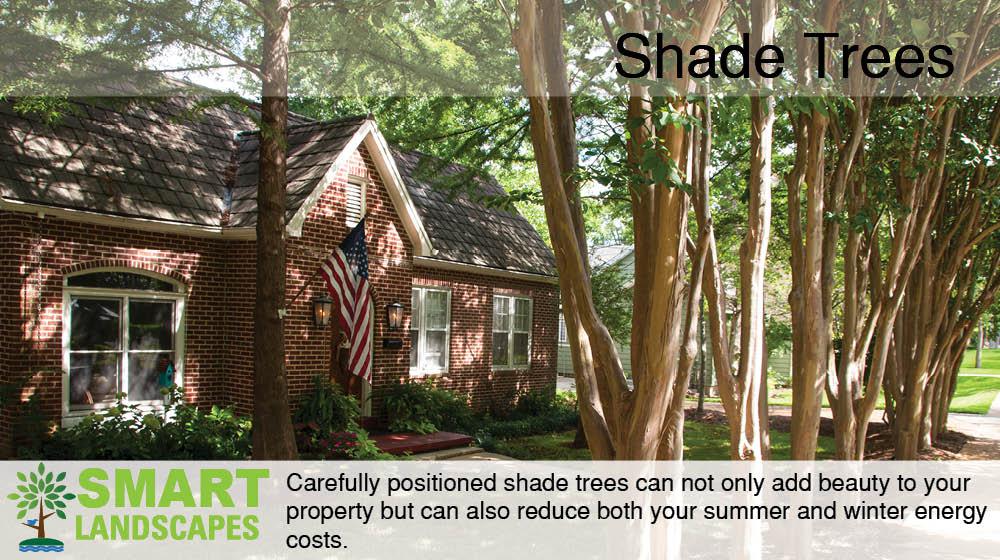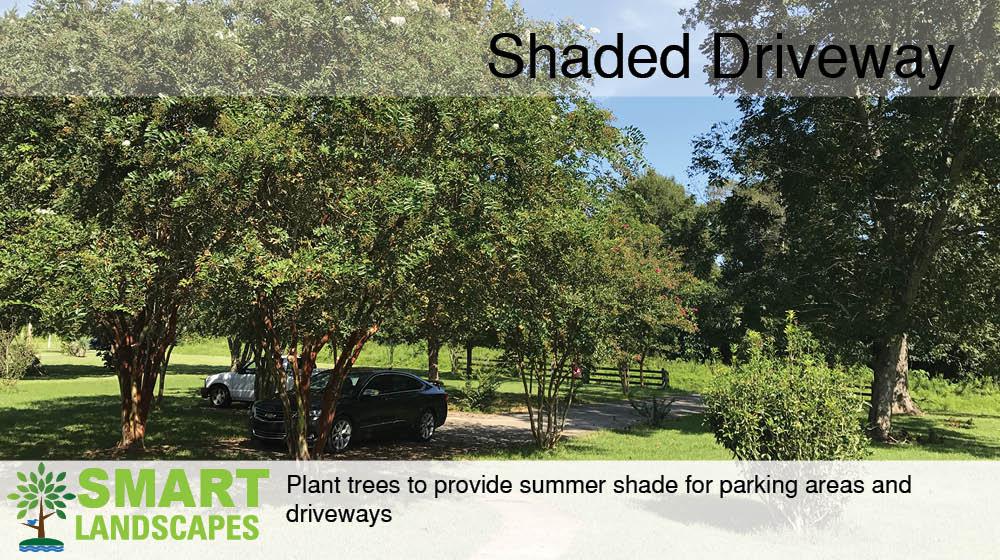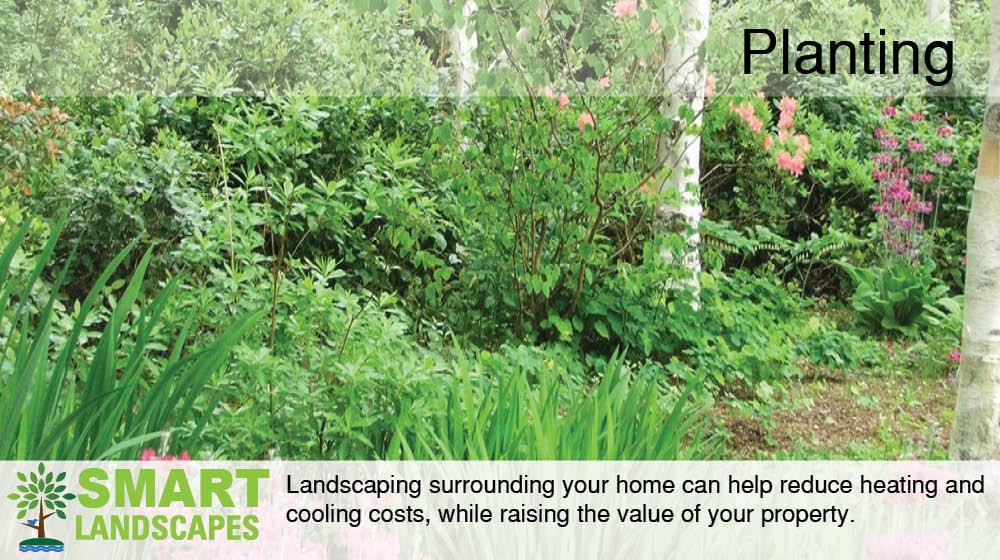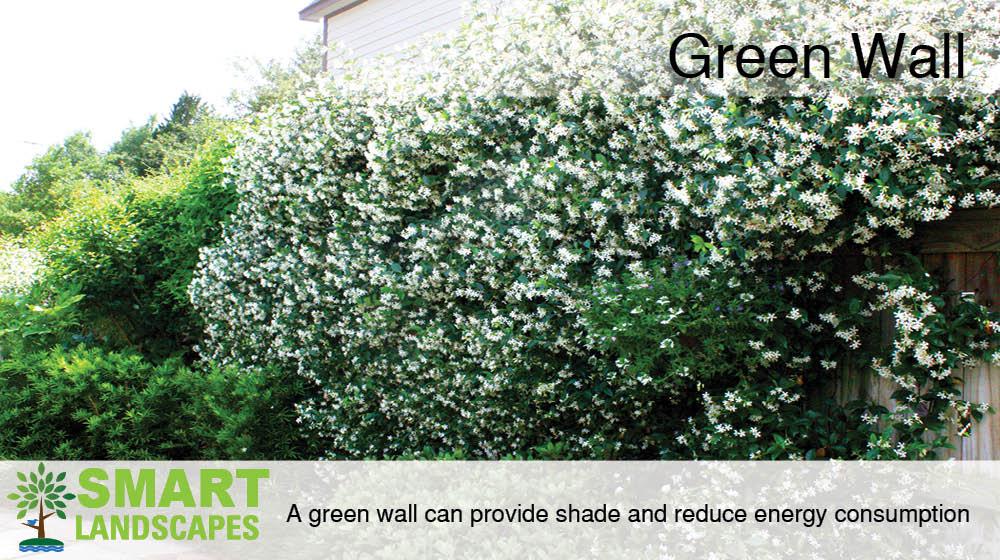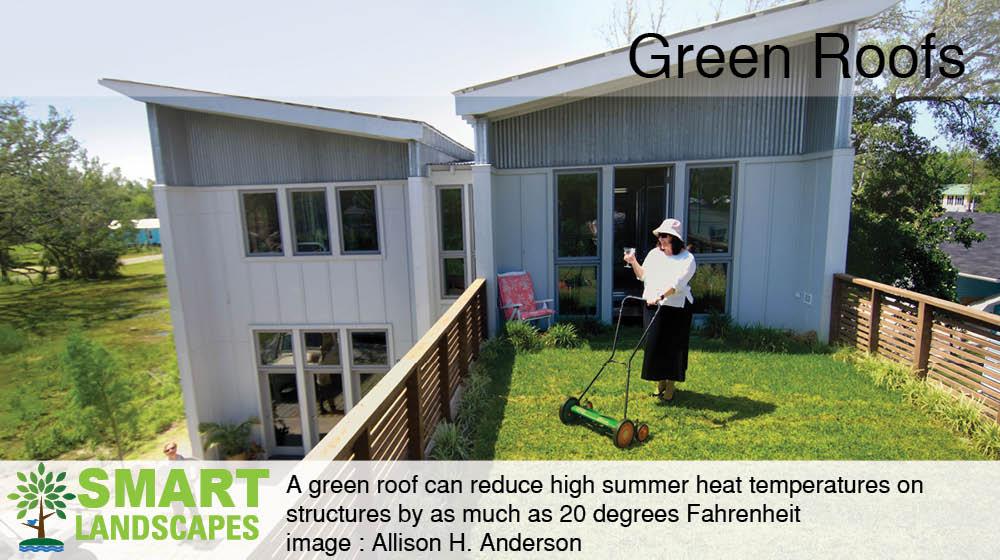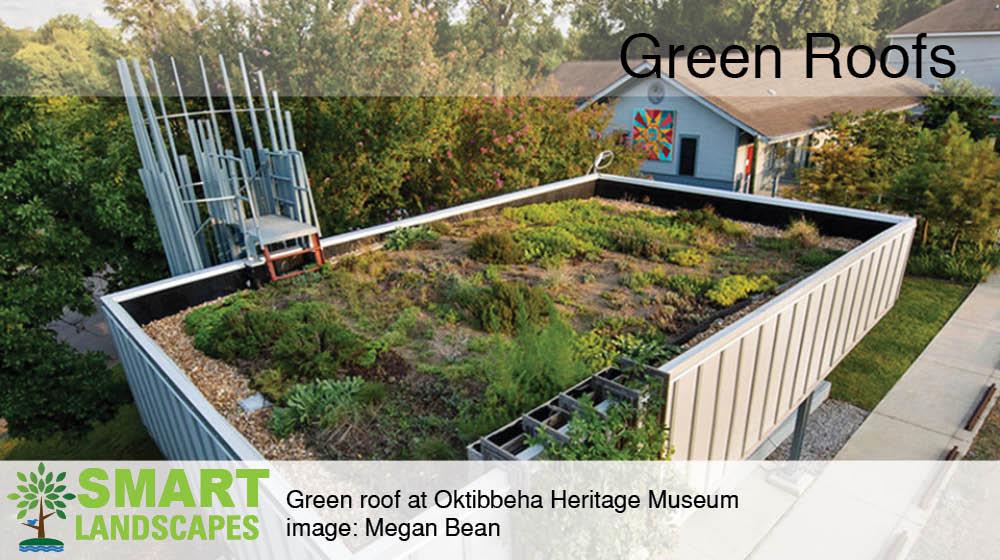Energy Savings
Energy Efficient Home Landscapes
Smart Landscaping can be part of the solution to make your home more energy efficient. A well designed landscape can not only add beauty to your property but can also reduce both your summer and winter energy costs. A study conducted in Auburn, Alabama found that adding trees around homes can reduce energy costs from $31 to $33 dollars per month.
Trees save money year-round
Tree placement can impact the amount of direct solar energy a home gains during a hot sunny day. Large trees should be placed on the south, east and west sides of the home. Summer temperature in the shade of a strategically placed tree can be reduced between 20-45 degrees. Tree shade can also help keep hard paved areas, like patios and parking areas, cool. Deciduous trees will lose these leaves in the winter allowing more sun through to heat the outside of your home.
MSU Extension Service Publications

Landscaping to Conserve Energy
Trees placed properly within the landscape can be as effective as other home improvements in reducing heating and cooling costs. Good selection and placement of trees within the landscape can help cool your house in summer and allow the sun's rays to warm your house in winter. They also can absorb carbon dioxide, reduce the greenhouse effect, and produce oxygen for us to breathe. Trees and other plants can shade houses and office buildings. This benefit reduces air conditioning needs up to 30 percent because less electricity is required for cooling
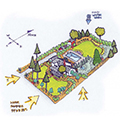
Selecting Shade Trees
Trees are among the most beautiful, useful, and permanent products of nature. Selecting the right tree or trees for the home landscape is an important decision. Your choice will impact not only you, but also those who inherit or buy your property in the years to come. Because trees are considered to be a more permanent part of the landscape and can take years to achieve the needed effect, planting trees is one of the first priorities when installing a new landscape or renovating an old one.
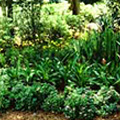
Successful Shade Gardens
Often viewed as a constraint for producing sun loving flower gardens, shade conditions in residential gardens offer many benefits as well. In addition to providing much needed relief from the summer sun in outdoor areas, shade trees reduce summer cooling needs
on homes when properly sited in southern or western locations. Deciduous shade trees also allow the winter sun through the open canopy to provide extra heat for residences in the cool season. Shade trees offer valuable food, nesting habitat, and shelter for a wide variety of birds and mammals.

Using Hedgerows on Properties
Buffering winds, noise, and dust. Establishing dense tree lines on the north sides of properties (often in more northern landscapes) buffers homes from cold winter winds, reducing winter heating costs. Dense vegetated screens are also effective barriers to dust from neighboring properties and nearby unimproved roadways. While hedgerows are not as effective as sound walls to reduce nearby noise, even narrow planting strips will reduce some sounds. The wider the hedgerow the more noise will be deflected. Choose evergreen plants to ensure some noise reduction in winter.
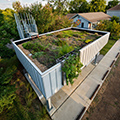
Green Roofs for Southern Landscapes
Green roofs are a planted and natural looking alternative to a traditional roof. The standard gravel, shingle or asphalt roof is covered with living plants grown on a media substrate, This type of roof reduces how hot the roof below comes and provides an additional layer of insulation.
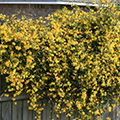
Plants for Green Walls
Green walls are living walls of plants that can shade the exterior of a building and reduce the the interior cooling needs. In addition to reducing the cooling load of the interior of the house, through the process of transpiration, they also help lower the air temperature of the surrounding and thus reduce any heat island effect caused by surrounding hardscape.
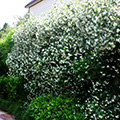
Designing with Vines
Vines growing on the south or west sides of buildings reduce solar heating in the summer, and insulate walls during the winter months. The creative use of vertical structural supports and vines can help to divide areas of the yard into separate spaces, and to screen unsightly views. Finally, vines add a needed splash of color and interest to the seasonal landscape.
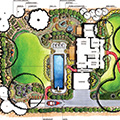
Developing a Landscape Plan to Save Energy
A well-designed landscape can increase the value of your home and property by as much as 15 percent. Landscaping can also reduce energy costs by buffering seasonal temperatures. Research indicates that heating or cooling bills could be reduced by as much as 30 percent by the proper placement of plants around the home. For example, proper placement of shade trees could provide cooling in summer, while evergreen trees could block cold winds in winter.
Additional Resources
Landscaping for Energy-Efficient Homes
U.S Department of Energy
https://energy.gov/energysaver/landscaping-energy-efficient-homes
Landscaping for Shade
U.S Department of Energy
https://energy.gov/energysaver/landscaping-shade
Energy Saver 101 Infographic: Landscaping
U.S Department of Energy 3, 2014
https://energy.gov/articles/energy-saver-101-infographic-landscaping
Landscape Windbreaks and Efficiency
U.S Department of Energy
https://energy.gov/energysaver/landscape-windbreaks-and-efficiency
Improving Our Environment One Roof at a Time
U.S Department of Energy
https://energy.gov/fe/articles/improving-our-environment-one-roof-time
Landscape to Reduce Summer Cooling Costs
Better Homes and Gardens
http://www.bhg.com/gardening/landscaping-projects/landscape-basics/energy-efficient-landscaping-tips/
Increasing Energy Efficiency: Residential Tree Placement For Energy Efficiency
American Society of Landscape Architects
https://www.asla.org/treeplacement.aspx
Using Trees and Vegetation to Reduce Heat Islands
Environmental Protection Agency
https://www.epa.gov/heat-islands/using-trees-and-vegetation-reduce-heat-islands

